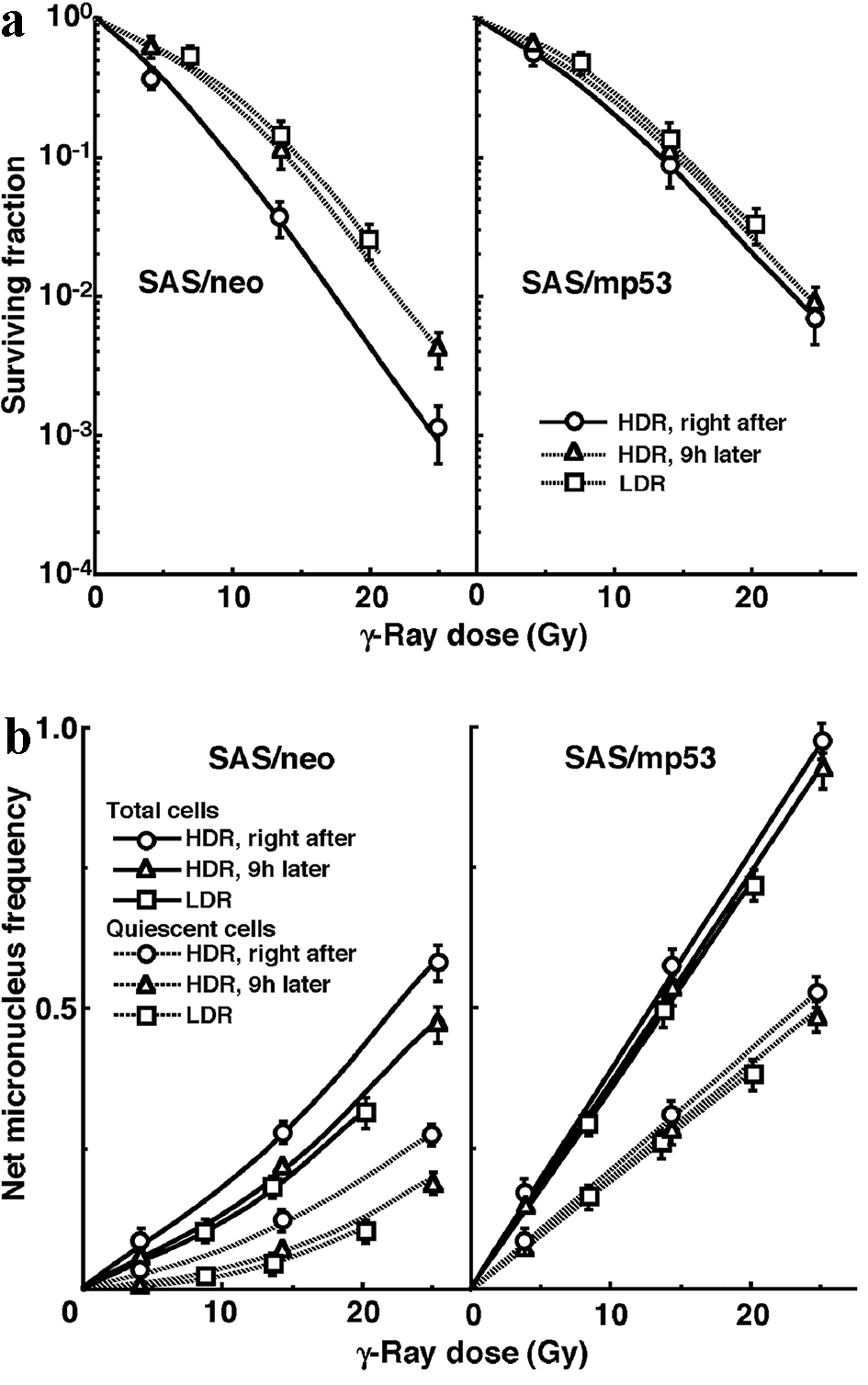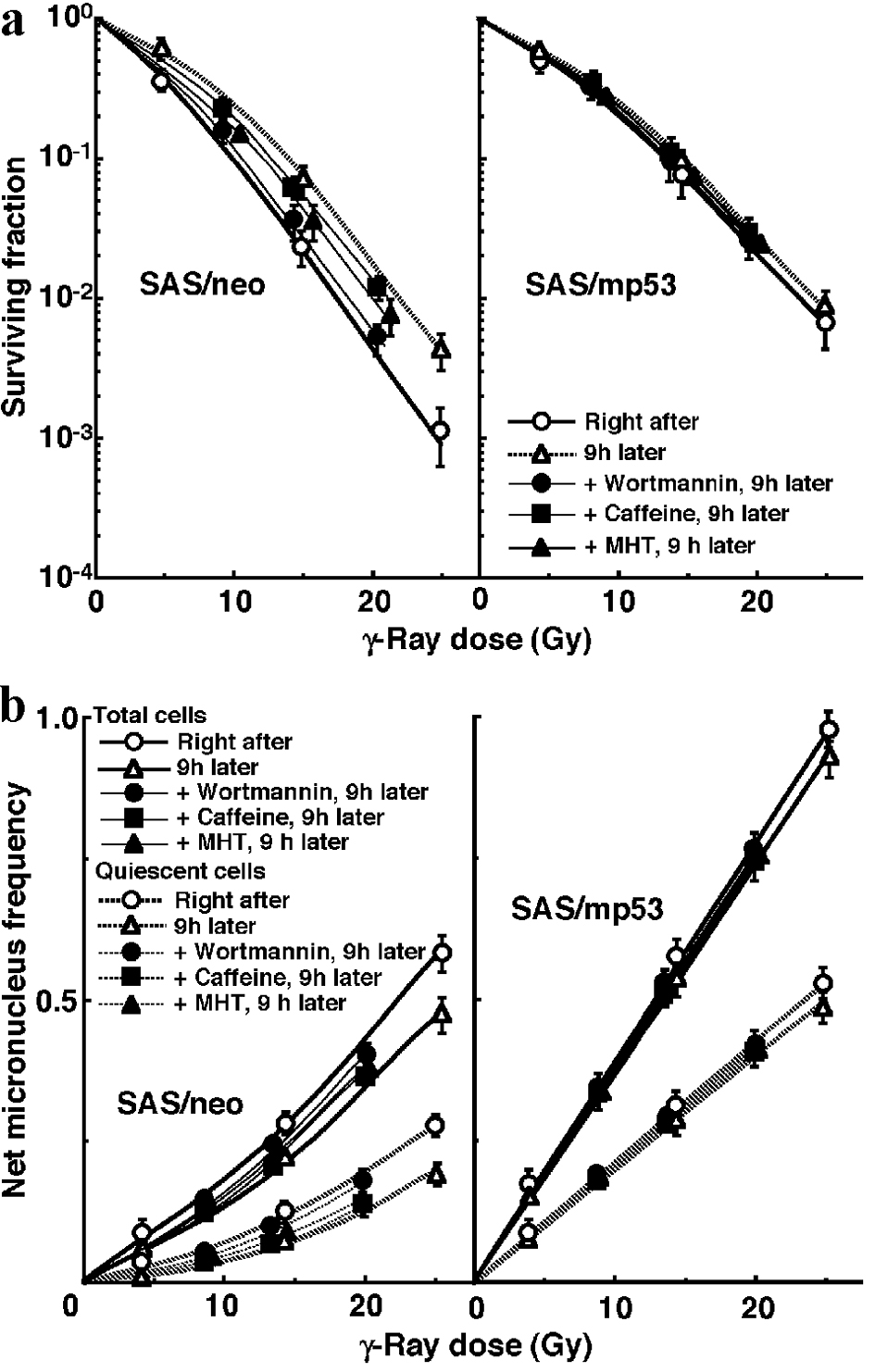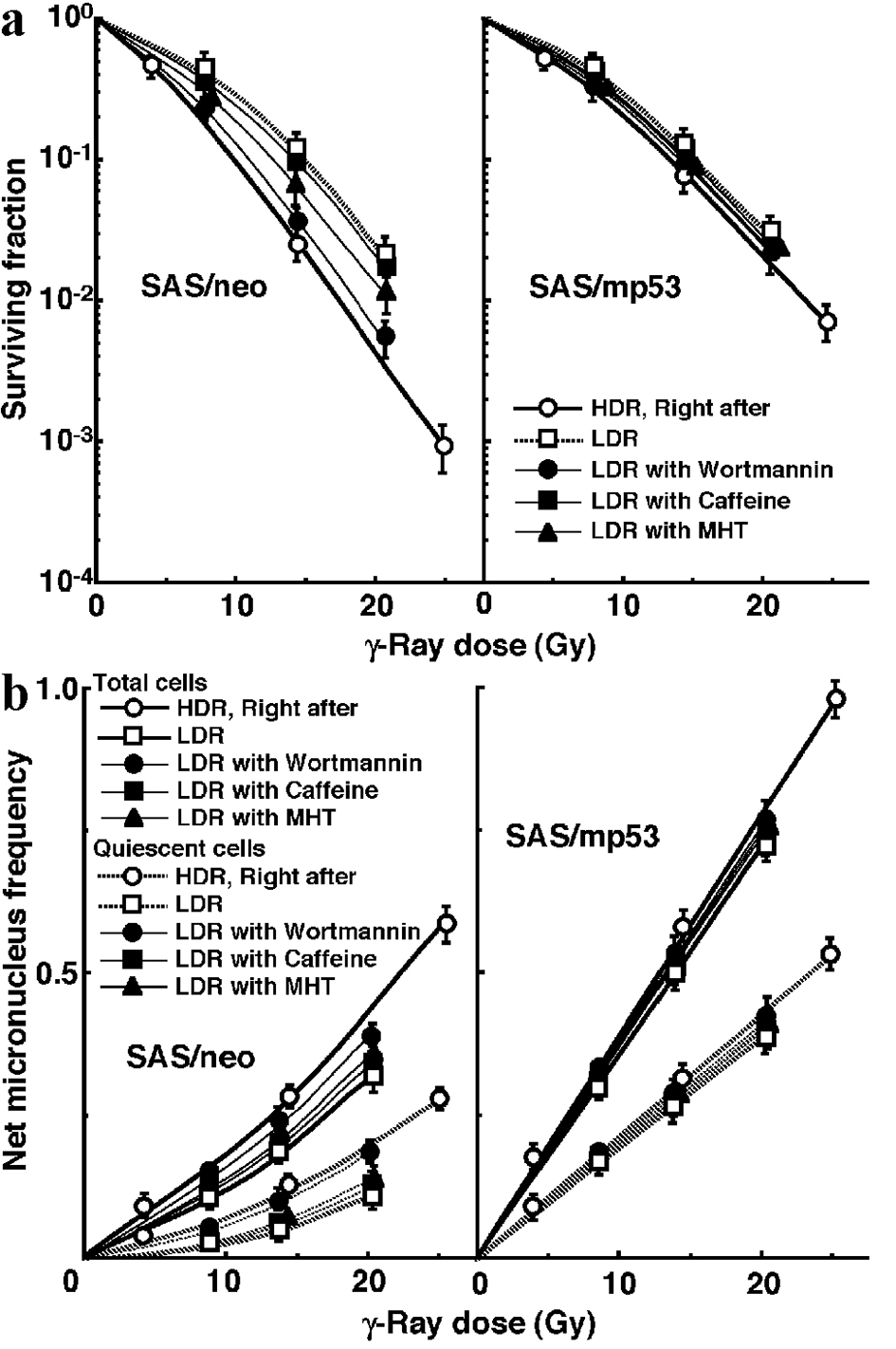
Figure 1. A marked reduction in sensitivity of SAS/neo tumor cells, especially quiescent tumor cells, compared with SAS/mp53 tumor cells with little recovery capacity. The clonogenic cell survival curves for total tumor cells and the net micronucleus frequencies for total and quiescent tumor cells immediately and 9 h after γ-ray irradiation with high dose-rate irradiation (HDR) and immediately after γ-ray irradiation with low dose-rate irradiation (LDR) are shown in (a) and (b), respectively. The left and right panels show SAS/neo and SAS/mp53 tumor cells, respectively. Bars represent 95% confidence limits. Three mice were used to assess each set of conditions and each experiment was repeated twice.

